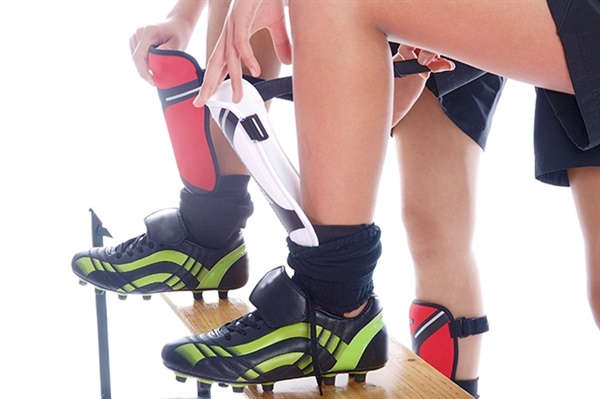Essential Gear for Beginner Salvo Soccer Club Players: Ages 2-5

The best time for your child to get involved in sports, specifically soccer, is between the ages of 2 and 5!
Signing your child up for soccer at a young age has many benefits, such as instilling the importance of staying active, teamwork, physical coordination, social interaction, and mental stimulation.
At Salvo Soccer Club, we proudly offer a youth soccer program called Soccer Shots, designed for young players ages 2 to 5. Your child will learn about character development, physical activity, mental fortitude, and emotional development.
Signing your child up for sports is only the first step, though! Soccer requires some specialized clothing and equipment, though far less than some sports. If this is your first foray into the world of youth soccer, Salvo SC has you covered!
This guide is designed to help you determine the equipment and clothing your young athlete will need to start playing organized soccer.
Comfortable Clothing
Young children playing soccer for the first time need loose-fitting and comfortable clothing.
You can purchase a Soccer Shots jersey, but having a few extra practice jerseys is always a good idea. Opt for lightweight, breathable material that allows for free movement. Ensure the fit is neither too tight nor too loose to prevent any restrictions during play.
Soccer shorts are another essential part of your child's uniform. If possible, choose a size that allows growth without being too long or too loose on your child. For the fall and spring seasons, having some athletic pants to wear over shorts and shin guards will help keep your child warm.
Salvo SC recommends and contracts with adidas, one of the most popular brands for soccer clothing!
Footwear
For organized soccer play, your child will not need soccer-specific cleats, but they are highly recommended.
Soccer cleats are designed to give your child the support and traction necessary to play on a grass field. Avoid choosing cleats designed for other sports, as the studs may not work right for playing soccer and are not legal. Since soccer requires quick movements, kicking, and sudden direction changes, soccer cleats are designed to support these needs.
Most organized play for young athletes will require molded soccer cleats. These are made with either rubber or hardened plastic construction with studs on the foot.
Molded plastic cleats are the safest option for beginner players.

Eventually, you may want to brush up on detachable cleats, turf shoes, and indoor soccer shoes. Since your child is still young and growing, the brand of soccer cleats may not matter as much. They will likely grow out of the cleats over a season or less.
Try to avoid buying a shoe that is too large, even if they can grow into the cleat. If your child has a thumb’s width between the toes and the end of the shoe, then it is too large.
When trying on cleats, have your child try bending, standing, running, and other soccer moves. If they are too uncomfortable, do not buy them, even if your child loves the colors. Uncomfortable cleats will cause blisters.
Shin Guards & Soccer Socks
Shin guards are essential for soccer because otherwise, your child will get injured and have many bruises. They protect your child from other players’ kicks, wayward soccer balls, and impact with the ground.
The best shin guard style for young players is shin guards with Velcro straps that wrap around the leg to hold the guard in place. It also has a stirrup-style strap at the bottom that goes under the foot to prevent the shin guard from moving up and down.
Shin guard sizing is also important.
Follow this guide for your young players:
It's unlikely that you'll need a bigger size for your young child playing soccer for the first time.

When sizing shin guards, look for ones that cover from a few inches below the knee to above the ankle bend. You can also check the manufacturer’s sizing chart for specifics – adidas offers extra small sizes for younger players.
Finally, you will need soccer socks. Soccer socks are tall socks that usually reach to about the knee and fold over. These are useful for keeping shin guards in place and allowing for more traction during falls.
Soccer Ball
Since your child is still young, you will need a ball to practice with at home. While the coaches may have balls for group practice, your child will need at least one to practice drills and play with family or friends.
For young players, choose a quality soccer ball that will withstand play and give your child the feeling of playing with a real ball. Do not buy a foam ball or something that will not be used in a real game.
There are several soccer ball sizes.
-
Size 1: 18 to 20-inch circumference
-
Size 3: 23 to 24-inch circumference
-
Size 4: 25 to 26-inch circumference
-
Size 5: 27 to 28-inch circumference

At Salvo Soccer Club, we use a Size 3 soccer ball, so it's best to have at least one on hand for home practice. Our coaches will supply soccer balls during organized practices and games, but we highly recommend that each player has their own.
Sign Your Child Up for Salvo SC’s Soccer Shots!
Now that you are well-versed in the type of equipment your child needs for soccer, sign them up for Salco SC’s Soccer Shots!
Our experienced coaches and training staff will guide your child toward a love of soccer, athletics, and teamwork through group play, games, practice, and gentle coaching. Give your child an early start into soccer with Salvo SC.
For more information about joining Salvo SC’s Minnesota-based soccer programs, give us a call at 612-503-4738 or contact us online!